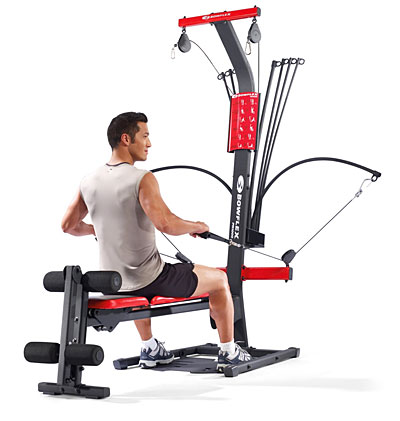- Like
- SHARE
- Digg
- Del
- Tumblr
- VKontakte
- Flattr
- Buffer
- Love This
- Save
- Odnoklassniki
- Meneame
- Blogger
- Amazon
- Yahoo Mail
- Gmail
- AOL
- Newsvine
- HackerNews
- Evernote
- MySpace
- Mail.ru
- Viadeo
- Line
- Comments
- Yummly
- SMS
- Viber
- Telegram
- JOIN
- Skype
- Facebook Messenger
- Kakao
- LiveJournal
- Yammer
- Edgar
- Fintel
- Mix
- Instapaper
- Copy Link
 Have Bowflex Home Gyms Stood the Test of Time?
Have Bowflex Home Gyms Stood the Test of Time?
Bowflex products have been hot on the fitness scene since the launch of their original home workout machine all the way back in 1986. Many fitness companies and products have come and gone, but somehow Bowflex is still going strong, and their brand has even become a household name.
Aimed at meeting the home exerciser’s complete home gym needs, they now offer everything from their original rod-based home gyms to a selection of Bowflex home cardio machines to nifty adjustable dumbbells to accessories such as stability balls, weight benches, and workout mats (not to mention that their parent company, Nautilus, is a HUGE provider of myriad workout machines found in commercial and private gyms the world over). So do their home gym offerings live up to their brand’s surprising longevity?
A critical eye is warranted when laying down your hard-earned cash on home exercise equipment….and what Bowflex offers ain’t exactly on the cheap side (though it is not among the most expensive). As a certified personal trainer with years of experience using most pieces of gym equipment under the sun, I would like take the opportunity to offer my honest opinion on the Bowflex home gym models currently available on the market to help you decode whether or not a Bowflex gym would be a good choice to meet your individual needs.
I’ll start with an overview of the benefits of and basic principles behind strength training in general and lay out what types of strength training workouts are best suited to which populations before moving on to an analysis of how Bowflex home gyms do or don’t fit into that picture.
Then I’ll unpack the Bowflex home gyms in terms of what you can and can’t expect from them, take a look at the feasibility of the marketing claims made by the Bowflex company, discuss who will and won’t be best served by what they offer, lay out possible issues you may come across and downsides to the product, finally digging into an overview of current Bowflex home gym models on the market and making recommendations as to which I think are the best and worst.
Keep reading for an unbiased Bowflex home gyms review by a certified personal trainer who has explored dozens of different training modalities over the years, both in and out of the traditional gym setting.
What are the Benefits of Strength Training?
 Strength training is often referred to as weight training or resistance training, the three terms being pretty much interchangeable. In case you’re new to these concepts, let’s briefly discuss how strength training in general, Bowflex-aided or not, benefits your body. The first benefit on everyone’s mind is, of course, building up your muscles. But what does that mean? Building muscle entails increasing both the strength and the size of your musculature.
Strength training is often referred to as weight training or resistance training, the three terms being pretty much interchangeable. In case you’re new to these concepts, let’s briefly discuss how strength training in general, Bowflex-aided or not, benefits your body. The first benefit on everyone’s mind is, of course, building up your muscles. But what does that mean? Building muscle entails increasing both the strength and the size of your musculature.
Certain people respond to basic, general strength training by quickly building the bulkier muscles that some desire and some wish to avoid. Most exercisers, however, will become leaner, losing body fat and achieving a toned look while becoming capable of more advanced muscle strength.
Strength training is essential for both men and women, and women should NEVER fear getting bulky or looking “manly” from strength training. Women will get lean and toned from basic strength training, and also increase their metabolism, which makes body fat loss easier to accomplish as well as more and more sustainable in the long term versus cardio alone. The above is also true for men, though they may have an easier time increasing the raw size of their muscles due to higher levels of different naturally-occurring hormones.
In addition to increasing muscle tone, strength, and size as well as boosting metabolic rate and making body fat loss easier, strength training has many other awesome benefits. Chief among them are increased bone density, reducing risk of osteoporosis and osteopenia, improved hormone balance, reduction in symptoms of depression and anxiety, making day to day activities of living and athletic pursuits much easier, boosted confidence in one’s own strength, power, and appearance, as well as relief from and prevention of low back pain (and knee pain and hip pain and shoulder pain, etc) by strengthening and stabilizing the muscles that support all of your moving parts.
There’s something for everyone in adding the right kind of strength training to their day to day life. But how much should you engage in, and given all the options out there, which types of strength training are best for advancing you toward your unique needs and goals?
How Much Strength Training Should I Do? What Type of Workouts are Best for Me?
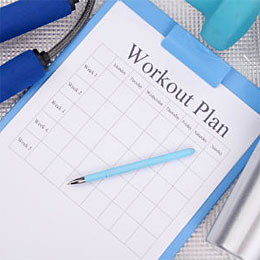 Your personal fitness level and your unique goals dictate how much you’ll need to train as well as which styles of strength training will serve you best. Adults seeking to lose weight, improve general health and enhance their appearance through resistance training can get away with three or four 30 to 45 minute strength training sessions per week. The style of training chosen for these folks should emphasize full body exercises, including lots of exercises using large muscle groups (legs, hips, back, chest, and core). This will increase calorie burn and make the workout more efficient and functionally applicable.
Your personal fitness level and your unique goals dictate how much you’ll need to train as well as which styles of strength training will serve you best. Adults seeking to lose weight, improve general health and enhance their appearance through resistance training can get away with three or four 30 to 45 minute strength training sessions per week. The style of training chosen for these folks should emphasize full body exercises, including lots of exercises using large muscle groups (legs, hips, back, chest, and core). This will increase calorie burn and make the workout more efficient and functionally applicable.
Most will want to add a few isolation movements for specific muscles the they would like to develop either for aesthetic, functional, or therapeutic purposes (think biceps curls, leg extensions, triceps presses). Those exercisers I have just described can benefit a lot from Bowflex home gym offerings, and the product can even become the cornerstone of their training program if they are not a “go hit the gym” type of person.
Exercisers with more advanced goals, such as really carving out their physique or seriously improving athletic performance will need to hit the weights more often – anywhere between four to six days per week depending on objectives and training styles employed. While they may be able to derive some utility from the Bowflex home gym, they will be better served with a wider variety of resistance options, such as barbells, dumbbells, kettlebells, resistance bands, cable stations, selectorized machines, etc. In other words….a gym membership or more well-stocked, diverse home gym setup will likely be better than investing in a Bowflex, which is naturally more limited in its scope.
Taking A Look at the Bowflex Marketing Claim “20 Minutes 3X per Week”
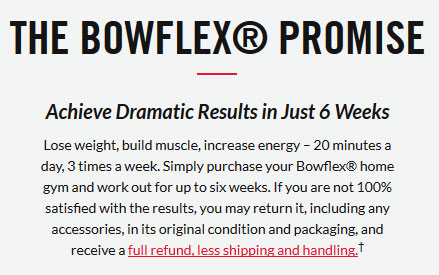
Although I like a lot of things about the Bowflex home gyms product line, I do take exception to the marketing claim that all you need is 20 minutes three times per week. While doing a full body strength training routine 20 minutes three times per week is certainly an improvement over a sedentary lifestyle spent desk-dwelling during work hours and munching tater chips while binging on Netflix at home, the pairing of such a suggestion with the models in the ads could be called misleading.
To make that kind of progress, you’re going to need to engage in significantly more than a net total of 90 minutes of strength training per week. For the average person to lean out to that point while building muscularity, a strength training routine more along the lines of three to four 60 minute sessions per week PLUS three to 30 to 40 minute vigorous cardio sessions PLUS strategic nutrition will certainly be called for.
While the Bowflex home gyms can absolutely be a great part of that picture, these home gyms in no way comprise the total fitness package from A to Z. And that’s fine! No one piece of equipment can cover every single base. If you choose to invest in one, just set realistic expectations and don’t fall for oversimplified marketing hype.
Who Will Get the Most Out of Bowflex Home Gym Workouts?
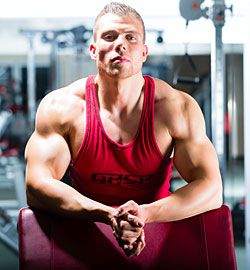 To boil it down further, if want to work out at home, you’re simply after steady and sustainable weight loss, general strengthening and toning, and you’re not trying to turn into a bodybuilder or competitive weight lifter, a Bowflex home gym can most definitely meet your needs. Purchasing one can be a great choice if you want to perform a wide variety of machine-type exercises without investing the money in or devoting the floor space to a ton of different equipment.
To boil it down further, if want to work out at home, you’re simply after steady and sustainable weight loss, general strengthening and toning, and you’re not trying to turn into a bodybuilder or competitive weight lifter, a Bowflex home gym can most definitely meet your needs. Purchasing one can be a great choice if you want to perform a wide variety of machine-type exercises without investing the money in or devoting the floor space to a ton of different equipment.
Who Will Not Be Well-Served By Bowflex Home Gyms?
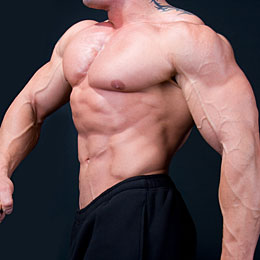 As stated above, those with more hardcore fitness goals will not be super happy with all the Bowflex has to offer. For one thing, the resistances of the rods only go up so high (some cap at 210; some are upgradable to 300, 310, or 410 pounds with the purchase of additional rods). While the built-in and upgradeable resistances are in an appropriately challenging range for many exercisers, more elite fitness folks will max out and be left wanting more. Additionally, more diverse types of resistance are required to really get to an advanced physique or truly elevated strength and power performance benchmarks. And no, a Bowflex bench press, squat or deadlift is NOT the same as one performed with free weights. So don’t go bragging about your max without the specific disclaimer that you’re using a Bowflex rather than barbells.
As stated above, those with more hardcore fitness goals will not be super happy with all the Bowflex has to offer. For one thing, the resistances of the rods only go up so high (some cap at 210; some are upgradable to 300, 310, or 410 pounds with the purchase of additional rods). While the built-in and upgradeable resistances are in an appropriately challenging range for many exercisers, more elite fitness folks will max out and be left wanting more. Additionally, more diverse types of resistance are required to really get to an advanced physique or truly elevated strength and power performance benchmarks. And no, a Bowflex bench press, squat or deadlift is NOT the same as one performed with free weights. So don’t go bragging about your max without the specific disclaimer that you’re using a Bowflex rather than barbells.
What Different Bowflex Home Gym Models Are Available?
Now that we’ve parsed out the basics, I’ll get more specific and break down the home gym models currently on the market. Let’s start with the most basic and least expensive, and work our way up stepwise to the fanciest and most pricey.
Note that all of the Bowflex models DO have the ability to offer multi-grip lat pulldowns, which is a major factor in deciding on a home gym. Some offer cardio rowing, some do not. One of the biggest differentiating factors in my book is the amount of leg exercises you can do; I’m not a fan of those models that limit your ability to do weighted squats and deadlifts, as those are two of the most essential and functionally important exercises for all exercisers.
Bowflex PR1000 Home Gym
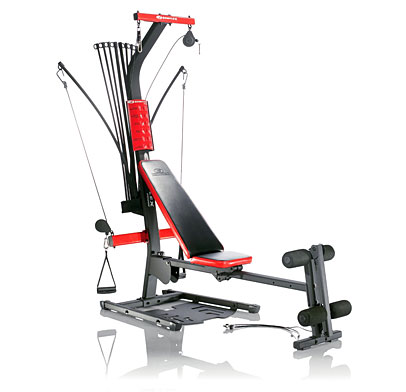 The simplest and cheapest Bowflex home gym out there, the PR1000 offers resistances up to 210 pounds. The resistance cannot be upgraded by purchasing additional power rods, unlike some of the other models. You’ll be able to perform around 30 weight training exercises, only 6 of which are for lower body. No squats, but leg press is doable. The cardio row function is available. This model offers the a warranty period of one year on the frame, 60 days on the parts, and five years on the power rods.
The simplest and cheapest Bowflex home gym out there, the PR1000 offers resistances up to 210 pounds. The resistance cannot be upgraded by purchasing additional power rods, unlike some of the other models. You’ll be able to perform around 30 weight training exercises, only 6 of which are for lower body. No squats, but leg press is doable. The cardio row function is available. This model offers the a warranty period of one year on the frame, 60 days on the parts, and five years on the power rods.
Bowflex Blaze Home Gym
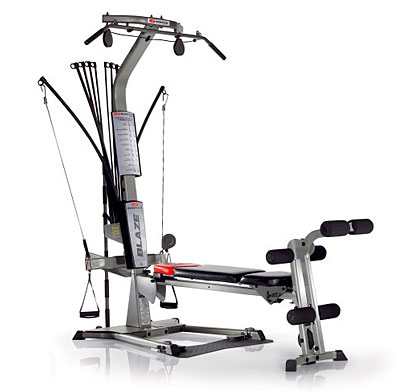 The Blaze represents a huge level up from the PR1000 in terms of versatility, and a not-insignificant jump up on the price tag. The Blaze offers a built-in maximum 210 pounds of resistance, which IS upgradable to 410 pounds for more advanced users if you purchase additional rods. Instead of 30 exercises, you can now do about 60, including a variation of squat and deadlift. Cardio rowing IS available on the Blaze. The same warranty is offered as the PR1000.
The Blaze represents a huge level up from the PR1000 in terms of versatility, and a not-insignificant jump up on the price tag. The Blaze offers a built-in maximum 210 pounds of resistance, which IS upgradable to 410 pounds for more advanced users if you purchase additional rods. Instead of 30 exercises, you can now do about 60, including a variation of squat and deadlift. Cardio rowing IS available on the Blaze. The same warranty is offered as the PR1000.
Bowflex PR3000 Home Gym
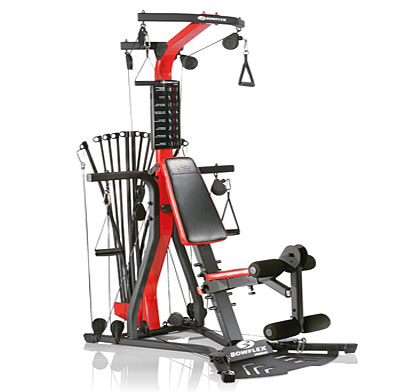 The PR3000 is basically an upgraded variation on the PR1000 as far as max resistance, quality, and design aesthetic goes. You are now able to upgrade the maximum resistance from 210 pounds to 310 pounds with the purchase of heavier-duty power rods. Note that the cardio row function is missing from the PR3000, as the bench angle does not adjust to lay flat. And no real way to squat or deadlift, if that’s important to you (and it should be). Same warranty terms.
The PR3000 is basically an upgraded variation on the PR1000 as far as max resistance, quality, and design aesthetic goes. You are now able to upgrade the maximum resistance from 210 pounds to 310 pounds with the purchase of heavier-duty power rods. Note that the cardio row function is missing from the PR3000, as the bench angle does not adjust to lay flat. And no real way to squat or deadlift, if that’s important to you (and it should be). Same warranty terms.
Bowflex Ultimate 2 Home Gym (discontinued – now only available used or refurbished)
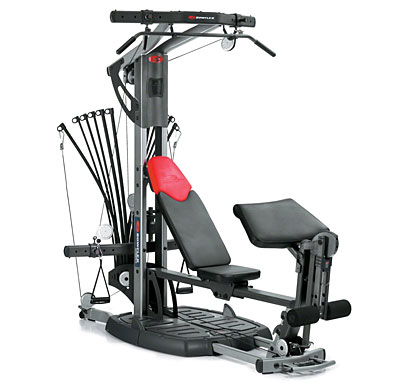 The Bowflex Ultimate 2 home gym used to be the granddaddy of Bowflex models, but it has been superseded by the Xtreme 2SE and Revolution. For this reason I’d recommend it only if you are on a budget and can find a used/refurbished one for a stellar deal, otherwise, go for a newer model. Similar to other Bowflex home gyms, it too provides a great total body workout for your upper body, lower body, midsection, etc., using a unique power rod and no-change cable pulley system. It formerly being a top-end model offers a lot in regards to features, but again, the newer models may be the better option if budget isn’t top priority.
The Bowflex Ultimate 2 home gym used to be the granddaddy of Bowflex models, but it has been superseded by the Xtreme 2SE and Revolution. For this reason I’d recommend it only if you are on a budget and can find a used/refurbished one for a stellar deal, otherwise, go for a newer model. Similar to other Bowflex home gyms, it too provides a great total body workout for your upper body, lower body, midsection, etc., using a unique power rod and no-change cable pulley system. It formerly being a top-end model offers a lot in regards to features, but again, the newer models may be the better option if budget isn’t top priority.
Bowflex Xtreme 2SE Home Gym
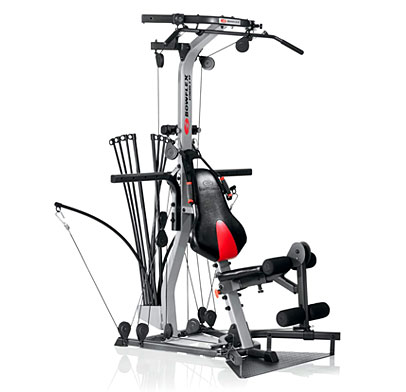 The Xtreme 2SE is a high-quality home gym model that has just about everything going for it aside from the ability to do the cardio row. You can do about 70 exercises including the leg stuff that you have probably figured out is so darn important to me. An good choice as long as you don’t care about cardio rowing (which is a nice feature but not absolutely essential if you plan to get your cardio in other ways). Same time period on the warranty.
The Xtreme 2SE is a high-quality home gym model that has just about everything going for it aside from the ability to do the cardio row. You can do about 70 exercises including the leg stuff that you have probably figured out is so darn important to me. An good choice as long as you don’t care about cardio rowing (which is a nice feature but not absolutely essential if you plan to get your cardio in other ways). Same time period on the warranty.
Bowflex Revolution Home Gym
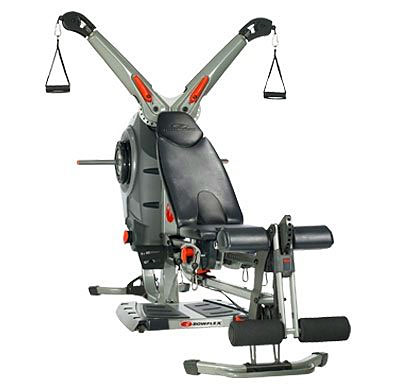 The Revolution is the big mama of all Bowflex home gyms, being the priciest as well as highest quality, coolest looking, and most versatile. You can do over 100 exercises including all my near and dear leg stuff. Cardio row is back. The machine is also quieter, smoother to operate, and more visually clean-looking because it uses “SpiralFlex technology” (plate-based instead of all that power rod business). “Freedom arms” allow you more variety on the angles you can set for the various exercises. The warranty is significantly upgraded to 10 years across the board in case something goes awry. The only downside is that maximum resistance, which starts at 210 pounds, is only upgradeable to 300 pounds. For most people looking at home gyms, though, that will not be a dealbreaker.
The Revolution is the big mama of all Bowflex home gyms, being the priciest as well as highest quality, coolest looking, and most versatile. You can do over 100 exercises including all my near and dear leg stuff. Cardio row is back. The machine is also quieter, smoother to operate, and more visually clean-looking because it uses “SpiralFlex technology” (plate-based instead of all that power rod business). “Freedom arms” allow you more variety on the angles you can set for the various exercises. The warranty is significantly upgraded to 10 years across the board in case something goes awry. The only downside is that maximum resistance, which starts at 210 pounds, is only upgradeable to 300 pounds. For most people looking at home gyms, though, that will not be a dealbreaker.
Which Bowflex Home Gym Model is Best?
 You can get a lot done on any of the Bowflex home gyms, and there are none that I would specifically recommend against if we are talking quality, though I’m not a fan of the PR1000 and PR3000’s lack of leg training options. Simply put, you just need to decide which features are most important to you, and how much money you are willing to lay down.
You can get a lot done on any of the Bowflex home gyms, and there are none that I would specifically recommend against if we are talking quality, though I’m not a fan of the PR1000 and PR3000’s lack of leg training options. Simply put, you just need to decide which features are most important to you, and how much money you are willing to lay down.
For me, my money is on the Revolution for the all-around best offering, and the Blaze as a more budget-friendly alternative. I like the cardio rowing function and the ability to really train legs in the most functional ways (squat, deadlift, etc) rather than just leg extensions or hamstring curls. I also really like the models that allow you to lay the bench down flat in order to perform more traditional flat chest press, fly, and bench row instead of the more limited incline versions. The models that allow the bench to go flat are PR1000, Blaze, and Revolution.
If you want the most complete home gym out there, just go ahead and spring for the Revolution. With the addition of a few accessories, the average home exerciser can build out a kickass complete home workout plan. Recommended accessories include some dumbbells (Bowflex SelectTech Adjustable Dumbbells are awesome in that you get 30+ different adjustable weights in just one space-saving set), a mat for floor work, a stability ball, and a foam roller for self-myofascial release. As for cardio goes, if you want to do that at home and you want to keep it Bowflex, you can get a Bowflex TreadClimber or better yet a Bowflex Max Trainer. Or if budget or space is at a premium just go outside and run, walk, hike, or bike to get your cardio (or buy some fun home cardio workout DVDs like Zumba Fitness or Turbofire!).
Downsides to the Bowflex Home Gyms
 The first item to note is that the Bowflex home gyms can be a bit…or more than a bit…noisy (the Revolution being the quietest). Let’s put it this way: if you have a sleeping baby or super sensitive housemates, stay off the Bowflex. The noise of the rods is not off-the-chain obnoxious, and I don’t find it offensive (but then again, I basically live in gyms, where lots of clangin’ and bangin’ is par for the course). But it is definitely noticeable, and some people claim to find it irritating.
The first item to note is that the Bowflex home gyms can be a bit…or more than a bit…noisy (the Revolution being the quietest). Let’s put it this way: if you have a sleeping baby or super sensitive housemates, stay off the Bowflex. The noise of the rods is not off-the-chain obnoxious, and I don’t find it offensive (but then again, I basically live in gyms, where lots of clangin’ and bangin’ is par for the course). But it is definitely noticeable, and some people claim to find it irritating.
Additionally, though the Bowflex home gyms are solidly built, covered for at least one year and up to 10 years by warranties, and anecdotally passed along for years in good condition as hand-me-downs, some reviewers have noted a lack of responsiveness from customer service in the event that something went wrong. Replacement parts may be slow to arrive, and repairs may be slow as well as expensive. As you already know if you’re reading this review, it’s always wise to look around at various product reviews before investing to take an inventory of other folks’ experiences before dropping a chunk of change on a piece of heavy and not-cheap machinery for your home.
Bowflex Home Gyms Review: The Trainer’s Takeaway
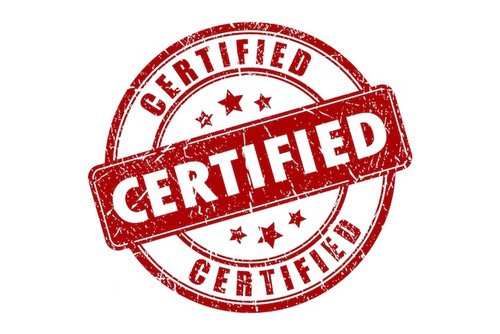 Bowflex home gym offerings have indeed stood the test of time and adapted to stay fresh and useful alongside other advancements on the fitness scene. If you have general goals of improving your health, fitness, strength, and appearance by burning body fat and adding lean muscle, and you have neither time nor inclination to join a gym, investing in a Bowflex home gym could be an excellent option for you.
Bowflex home gym offerings have indeed stood the test of time and adapted to stay fresh and useful alongside other advancements on the fitness scene. If you have general goals of improving your health, fitness, strength, and appearance by burning body fat and adding lean muscle, and you have neither time nor inclination to join a gym, investing in a Bowflex home gym could be an excellent option for you.
Though more advanced exercisers may max out on movement patterns and resistance levels available, more general-purpose exercisers will find a lot of benefit by using a Bowflex home gym. Just be sure to buy one of the models that allows you to do the squatting and deadlifting motions. The models which include the cardio row option are especially appealing in that you can use your home strength machine to add variety to your cardio choices options (and let’s face it, same-old same-old cardio can be stale and BORING). The Blaze and the Revolution models offer the most versatility and value, including dozens of exercises, a legit way to train your legs, and the cardio rowing function.
About Michael Behnken
Mike Behnken is a personal trainer who holds multiple NASM certifications and a MS in Exercise Science. Mike loves fitness, travel, and photography among many other interests.

